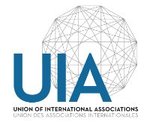Science and Education a New Dimension
Iss. 118. 2017.
O. M. Afanasieva Ritual-forming components and their genre configurations in the English-language communication (based on pre-election debates in the USA)
Abstract. The article deals with linguistic and pragmatic description as well as singling out of the communicative interaction components that have a ritual-forming potential and express the communicative dominants of affiliation, giving / taking, competition, modelling, formatting. They are represented in a genre-related and situation-driven communicative configurations and marked by different semiotic means. Theoretical issues under consideration are based on the materials of the Hillary Clinton and Donald Trump pre-election debates.
Keywords: ritual, communication, dominant, component, genre, configuration.
O. M. Afanasieva Ritual-forming components and their genre configurations in the English-language communication (based on pre-election debates in the USA)
A. V. Bezrukov Metaphysical Paradigms in Poetry of the First Generation of English Metaphysicals (J. Donne, G. Herbert, F. Quarles)
Abstract. The Metaphysical poetry is concerned with the whole experience of man, but the intelligence, learning and seriousness of the poets means that the poetry is about the profound areas of experience especially – about love, romantic and sensual; about man’s relation- ship with God – the eternal perspective, and, to a less extent, about pleasure, learning and art. The Metaphysical poets created a new trend in history of the English literature. These poems have been created in such a way that people must have enough knowledge to get the actual meaning. The Metaphysical poets made use of everyday speech, intellectual analysis, and unique imagery. The creators of the Metaphysical poetry, John Donne along with George Herbert and Francis Quarles, are successful not only in that period but also in the modern age.
Keywords: Metaphysical poetry, style, religion, God, emblem, school.
A. V. Bezrukov Metaphysical Paradigms in Poetry of the First Generation of English Metaphysicals (J. Donne, G. Herbert, F. Quarles)
A. Bilas The rendering of structural and paradigmatic features of colloquial lexemes in the Ukrainian translation of “The Elementary Particles” by Michel Houellebecq
Abstract. The article deals with paradigmatics in low colloquial language as a translation problem. The matter of translatability of French structurally marked low colloquial words is examined. The ways and methods of rendering the structural connotation expressively charged colloquial component of M. Houellebecq’s novel “The Elementary Particles” in the Ukrainian translation are analysed.
Keywords: low colloquial language, structural connotation, translation, functionality, transformation, paradigmatics, affixes, truncation, rendering.
A. Bilas The rendering of structural and paradigmatic features of colloquial lexemes in the Ukrainian translation of “The Elementary Particles” by Michel Houellebecq
Y. Brazhuk The sources of metaphorization and peculiarities of the metaphorization process in medical terminology
Abstract. The present article deals with the source of metaphorization and peculiarities of this process. Metaphor as a mechanism of learning the world as well as effective way of formation of terminological units and rethinking of previously created ones, particularly in medical field, is explored. Metaphor through the use of imagery is examined as verbalized way of thinking and a powerful tool of creation of the world language picture.
Keywords: metaphor, anatomical terminology, scientific term for the metaphorical naming, strategy of metaphorization.
Y. Brazhuk The sources of metaphorization and peculiarities of the metaphorization process in medical terminology
I. O. Golubovska Representation of the Sensory-receptive Conceptualization of the Reality by Means of Phonetic-morphological Language Level (scope of the cross-language research)
Abstract. The article focuses on the problems of language and phonetic categorization of the effects of sensory-receptive conceptualization of reality which are considered in cross-language vein. On the material of zootonims and onomatops the differences and similarities of the acoustic impressions’ language conceptualization by ethnic person are being investigated. The phonesteme is qualified as a more reliable tool for cross-language study if compared to the phoneme, particularly in the context of the research of language ontogenetic and phylogenetic processes.
Keywords: conceptualization of reality by language, phonetic-morphological stratum, comparison, onomatopoetic vocabulary, zootonims, onomatops, phonesteme.
I. O. Golubovska Representation of the Sensory-receptive Conceptualization of the Reality by Means of Phonetic-morphological Language Level (scope of the cross-language research)
O. V. Kalashnyk Pronoun as an expressing method of implicit meanings
Abstract. The article is devoted to the researching of language implications. It is outlined different scientists’ approaches of the concept of language implicitness. Considering wide understanding of this linguistic phenomenon it’s defined functional loading of one from other means of its expression – pronominatives in the disclosing covert essences in the intimate lyrics texts. Mainly the atten- tion is focused on disclosing hidden meanings using personal pronouns I, YOU, WE, YOU (pl.) as keywords of this genre of poetry.
Keywords: language implicitness, hidden meaning, subtext, pronoun, poetic text, intimate lyrics.
O. V. Kalashnyk Pronoun as an expressing method of implicit meanings
L. V. Klymenko Flanerie's semantic space in french linguoculture
Abstract. The article is devoted to the flanerie’s phenomenon semantic analysis. As a significant XIXth centuries’ French sociocultural fact the flanerie has been considered as a special type of the behavior in the urban environment. The flanerie’s cognitive features semantic interpretation has been realized. The article’s result is a model of the flanerie’s semantic space represented as a propositional structure.
Keywords: flanerie, flaner, urban environment, cognitive features semantic interpretation, propositional structure, semantic actant, semantic predicate, semantic spаce.
L. V. Klymenko Flanerie’s semantic space in french linguoculture
V. M. Labetova The Category of Definiteness Indefiniteness through the Prism of ideas of covert Grammar
Abstract. The article is devoted to the researching of the category of definiteness/ indefiniteness in modern Ukrainian in relation with the theory of covert grammar. The features of field-structure of category of definiteness/ indefiniteness are analyzed and the paradigm of its explicit and implicit expressive means is proposed. There are morphological, lexical, syntactic and textual means, which form the central and peripheral zones of the category of definiteness/ indefiniteness.
Keywords: the category of definiteness/ indefiniteness, covert grammar, explicit and implicit means, communicative situation.
V. M. Labetova The Category of Definiteness Indefiniteness through the Prism of ideas of covert Grammar
T. V. Lunyova The linguo-cognitive peculiarities of the frame NATURE CONSERVATION in a literary text (on the material of the novel Freedom by Jonathan Franzen)
Abstract. The article focuses on the analysis of the linguo-cognitive peculiarities of the verbalization of the frame NATURE CONSERVATION in the novel Freedom by Jonathan Franzen. It describes the conceptual evolving of the frame NATURE CONSERVATION in the novel, lists its 8 subframes represented in the text and describes the mechanism of integration of this frame into the specific conceptual structure of the whole literary text.
Keywords: frame, subframe, literary text, conceptual structure, text semantics.
T. V. Lunyova The linguo-cognitive peculiarities of the frame NATURE CONSERVATION in a literary text (on the material of the novel Freedom by Jonathan Franzen)
T. V. Nikitiuk Pragmalinguistic analysis of the speech genre ‘rough order’ (in Turkish literature)
Abstract: This study examined pragmalinguistic characteristics of speech genre ‘rough order’ in modern Turkish literature. In particular, was been described communicative roles of interlocutors, their communicative goals, lexical and grammatical forms with which they apply the ‘rough order’ in his speech. It is established that this type of genre is confrontational and was apply in conflict communicative situations.
Keywords: speech genre ‘rough order’, the addresser, the addressee, conflict communicative situations.
T. V. Nikitiuk Pragmalinguistic analysis of the speech genre ‘rough order’ (in Turkish literature)
S. V. Novoseletska, N. V. Shapran Sociolinguistic transfer of the norms of intercultural communication in the realities of the global world
Abstract. The important element of intercultural communication, which has become so popular recently, is the phenomena of globalization of the world not only in the sphere of economics, politics, but as well as in culture and language, which are losing their values and gaining some others’ from more popular and well known in the modern world. Thus, in such situation of global process, the ethnic rules and norms of intercultural communication suffer from different changes, which have become universal in many countries and with many people. Such persistent influence of globalization has as positive as negative sides, has supporters and opponents. The dimensions of the social context shape communicative conversations, thereby giving them their culturally specific character, what members of particular cultural groups thank or apologize for, or compliment on, usually reflects values because, in performing these speech acts, people are often implicitly assessing the behavior, possessions, accomplishments, character, or appearance of others. A source of intercultural miscommunication highlighted by the findings of cross-cultural studies is sociolinguistic transfer. Sociolinguistic transfer refers to the use of the rules of speaking of one’s own speech community or cultural group when interacting with members of another community or group. This can occur in interactions in which one or more of the interlocutors is using a foreign or second language but employing the rules of speaking of his or her native language, It can even occur in interactions between individuals who have different rules of speaking. To illustrate how sociolinguistic transfer can be a source of intercultural miscommuni- cation, we turn to some studies of compliment giving and responding behavior. There is frequently interactional trouble when mem- bers of one cultural group compliment in situations in which compliments are inappropriate for members of other groups. Sociolinguists have also shown that the effects of intercultural miscommunication generated in the micro contexts of talk, in turn, have an impact upon the structural circumstances of the society. Sociolinguists, however, have been slow to address how insights from their studies of intercultural communication can be used to improve the practice of intercultural communication, this slowness is because of the tendency of sociolinguists to take a stance as outsiders and in their recognitions of the integrity and equality of all cultures, to be reluctant to “meddle” with the cultures they study.
Keywords: intercultural communication, language, globalization, culture, language behavior.
S. V. Novoseletska, N. V. Shapran Sociolinguistic transfer of the norms of intercultural communication in the realities of the global world
O. S. Oliynyk Images-stereotypes of the crime and the criminal in American naïve language mapping of the world
Abstract. This study aims to address and depict the images-stereotypes of the crime and the criminal which alongside with conceptual metaphor form the image component of the concept “crime”, verbalized in various publicistic genre forms of American media. By way of cognitive interpretation method and contextual analysis method a stereotypical image of crime as an act of violence and mental pictures of the criminal’s image have been reconstructed in the form of a prototypical image (the attributes of appearance and character), a professional image-stereotype (the attributes of criminal activity), a social image-stereotype (the attributes of socialization) and an evaluation image-stereotype (the attributes of evaluation).
Keywords: concept, the image component of a concept, a prototypical image-stereotype, a professional image-stereotype, a social image-stereotype and an evaluation image-stereotype.
O. S. Oliynyk Images-stereotypes of the crime and the criminal in American naïve language mapping of the world
O. I. Pjetsukh Normativity in the political discourse of the UK parliamentary debates
Abstract. This article concentrates on the official documents and the Standing Orders that form the basis of the debates in the UK parliament. The parliamentary debates are considered as the genre of the political discourse that is characterized by the number of differentiating features associated with the traditionalism, normativity and protocolism. The paper deals with the hansards of the House of Commons and the House of Lords in the UK parliament in the post-Thatcher period. The transcripts show the situations when the violation of norms and rules are regulated.
Keywords: parliamentary debates, political discourse, traditionalism, Thomas Erskine May, Standing Orders, Code of Conduct, communicative turn.
O. I. Pjetsukh Normativity in the political discourse of the UK parliamentary debates
J. Rogach Peculiar Features of Structure and Сontent of Printed Mass-Media Means of Australia
Abstract. The article is devoted to the description of the structure of the main printed mass-media means of Australia and the peculiarities of the presentation of their content. A special attention has been paid to such factors as the affiliation of a mass-media means to a certain mass-media group or corporation, its frequency, circulation, sets and headings of sections, and a history of its development. Demographic characteristics of a target audience, national and local traditions have been analyzed and their influence on the formation and functioning of a printed mass-media means, a choice of sections and design were defined too.
Keywords: printed mass-media means, structure, content, section, target audience, Australia.
J. Rogach Peculiar Features of Structure and Сontent of Printed Mass-Media Means of Australia
O. B. Skliarenko, L. P. Letiucha Characters speech as a part of genre and stylistic dominant on macrostylistic level (on the material of Ingeborg Bachmann’s stories)
Abstract. The article reveals the peculiarities of the characters’ discourse in the stories of the famous austrian writer Ingeborg Bachmann on the examples of her collections «Das dreißigste Jahr» and «Simultan». It was established, that these stories are characterized by the usage of cooperative, conflict and manipulative communicative strategies. It was also established, that the communicative tactics in these stories are the main component of the communicative strategies. These are comfort, persuasion and intimidation communicative tactics. On the language level they can be noticed on the lexical and syntactical level.
Keywords: stories, discourse, communicative strategies, communicative tactics, discourse behavior.
Characters speech as a part of genre and stylistic dominant on macrostylistic level (on the material of Ingeborg Bachmann’s stories)
G. Spotar-Ayar Functional particularities of bulunmak as an auxiliary verb in periphrastical structures (in official documents of Turkish language)
Abstract. The functioning of the verb ‘to be found’ – bulunmak in periphrastical structures has not been studied in most grammar books except from some limited evidences which mention it as paired with this auxiliary verb structure that takes place in “priority verbs” subheading under the “complex verbs” category. As compound verbs (periphrastcal structures) can be compound of two auxiliary verbs as olmak – to be and bulunmak – to be found, we have a necessity to define the difference of functioning of this two verbs according to grammatical and style particularities and also to find out the meaning difference of this auxiliary verbs within one structure. The aim of this research is also to find out the reason of functioning the mentioned auxiliary verb mostly in the language of official documents during all the periods of Turkish language.
Keywords: auxiliary verbs, compound verb, periphrastical form, style, stylistical meanings.
G. Spotar-Ayar Functional particularities of bulunmak as an auxiliary verb in periphrastical structures (in official documents of Turkish language)
D. O. Volnytska The peculiarities of Noun Phrase Information Structure in Old English
Abstract. The article considers peculiarities of the Old English syntax with the specific reference to OE Noun phrase namely Determiner phrase. The paper highlights basic structural components of NP analyzed in OE written records. The author illustrates main patterns of NP in generative framework using the modern approach such as Information Sentence Structure (ISS). The article explains different scientific views concerning ISS, reveals new generative approaches to defining the main components of IS, i.e. topic, focus.
Keywords: noun phrase, information sentence structure, determiner phrase, topic/focus, actual divion of the sentence.
D. O. Volnytska The peculiarities of Noun Phrase Information Structure in Old English
N. Yasakova Transposition of the personal forms in expression of the varieties of categorical meaning of the second person
Abstract. The article consist of the analysis of variants of categorical meaning of the second person explicated due to the transposition of the forms of the first person plural and third person singular/plural. We involvement eliminates social distance between the communicants, marking the high social status of the speaker. Units with a meaning of a third party emphasize the social distance between the communicants.
Keywords: personality, the second person, transposition, semantic and pragmatic option.
N. Yasakova Transposition of the personal forms in expression of the varieties of categorical meaning of the second person







